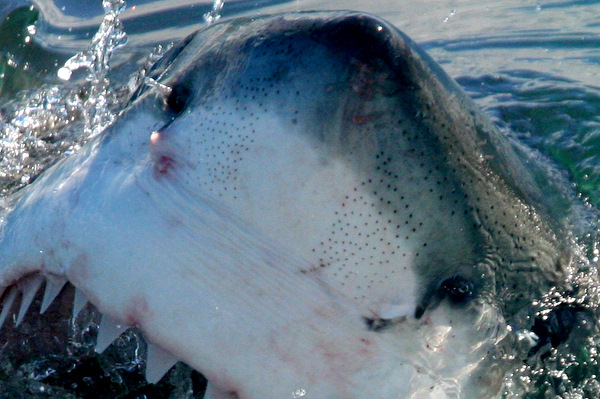What is a white shark's sense?

So what sense can sharks detect that allows them to feel a heart beat? No it's not the Enrique Iglesias effect, white sharks are able to detect electrical currents in the water. All animals produce electrical currents, heart beats, tapping your finger, any movement produces a weak electrical current.Sharks have an incredibly unique system on the tip of their nose, or rostrum, called the ampillae of Lorenzini which are small pores filled with a gel that take the electrical currents in the water to the shark's brain for it to assess what the current is coming from. They also have a lateral line system allowing the sharks to feel changes in pressure and movement all along their body. Check out this close up picture of a white shark's rostrum. See the little 'ampilliae'?
Do you have a shark fact you are dying to know the answer to? If you have a white shark question that hasn't been featured yet on the blog, email us by clicking here!
_1420x587_crop_80.jpg)







